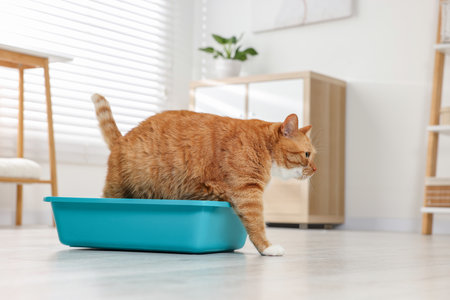Why Litter Box Training Matters in the UK
In the heart of every British home, from bustling London flats to cosy Cotswolds cottages, a well-trained kitten can make all the difference to daily life. Litter box training isn’t just about keeping your carpets clean—it’s a cornerstone of harmonious living with your feline friend. For UK cat owners, proper litter habits mean less stress and more enjoyment as you watch your little adventurer explore their new surroundings. With our famously unpredictable weather, kittens often spend more time indoors, making reliable indoor toileting essential for both your pets wellbeing and your peace of mind.
British homes are uniquely diverse, ranging from traditional terraced houses with limited garden access to spacious countryside manors. Understanding how these environments impact litter box choices and routines is key. Below is a quick comparison of typical UK home types and the challenges they present for litter training:
| Home Type | Common Challenges | Litter Box Solutions |
|---|---|---|
| City Flat | Limited space, multiple occupants | Compact, hooded boxes; regular cleaning |
| Suburban Semi-detached | Outdoor/indoor mix, children or other pets | Multiple trays; strategic placement for privacy |
| Countryside Cottage | Muddy paws, access to gardens | Easy-clean mats; trays near entry points |
By tailoring your approach to fit both your kittens needs and your living situation, you’ll foster good habits from day one—making life easier whether youre hosting afternoon tea or curling up by the fire with your purring pal. Remember, in true British style, a little preparation goes a long way towards creating a happy home for both you and your curious companion.
2. Choosing the Purr-fect Litter Box and Location
If you’ve ever traipsed through a cosy British flat or navigated the nooks of a Victorian terrace, you’ll know that space in UK homes can be at a premium! When it comes to litter box training your kitten, selecting the right box and finding its ideal home is essential for both feline comfort and keeping your living space fresh and pleasant. Here’s how to make this decision with a true British twist.
Types of Litter Boxes: What Works Best for UK Cat Owners?
| Litter Box Type | Best For | Pros | Cons |
|---|---|---|---|
| Open Tray | Small flats, easy cleaning | Affordable, easy access for kittens, simple to clean | Less odour control, can get messy if placed near doors or radiators |
| Covered Box | Larger homes, multi-cat households | Better odour control, privacy for your kitten, looks tidier | Might not fit in tight spaces, some kittens dislike enclosed spaces |
| Top-entry Box | Curious kittens, modern interiors | Keeps litter inside, stylish design, keeps dogs out (if you’ve got a cheeky pup!) | Might be tricky for tiny kittens to climb in initially |
| Self-cleaning Box | Busy cat owners, tech lovers | Saves time, excellent odour control | More expensive, needs power source nearby (not always handy in older UK homes) |
Finding the Ideal Spot: Placement Tips for UK Homes
The typical British home may have limited space or quirky layouts—think under-stairs cupboards or box rooms! The location of your kitten’s litter tray can make all the difference. Here are some tips tailored for UK cat owners:
- Avoid High-Traffic Areas: Kittens need privacy, so steer clear of hallways or by the front door where people are always coming and going.
- Noisy Appliances: Don’t put the litter box near the washing machine or tumble dryer; sudden noises might scare off your little explorer!
- Easy Access: Especially important in multi-storey houses—make sure there’s a tray on every level so your kitten isn’t caught short during their adventures.
- Away from Food & Water: Just like us Brits wouldn’t want our loo next to the dining table, keep the litter tray far from where your kitten eats and drinks.
- Cosy Corners: Utilise alcoves or under-used corners—ideal spots for privacy without taking over precious living space.
- Draught-Free Zones: Avoid placing trays near doors that frequently open to chilly British breezes!
A Quick Placement Checklist:
- Is it private but accessible?
- Away from food bowls?
- No loud noises nearby?
- Easily reached on each floor?
- No cold draughts?
Your Kitten’s Comfort Matters Most!
Remember, a happy kitten makes for a happy home. By choosing the right litter box style and location tailored to your unique British abode, you’ll be one paw closer to stress-free training—and more time for cuddles and playtime with your furry companion!

3. Selecting the Right Litter for British Kittens
Choosing the ideal litter for your kitten’s first adventure in the world of litter boxes can feel a tad overwhelming, especially with so many options lining the shelves at your local Sainsbury’s, Pets at Home, or even Waitrose. The UK market offers an impressive variety of cat litter types, each boasting its own benefits—whether you’re looking for something eco-friendly, gentle on your wallet, or simply fuss-free. Here’s a handy guide to help you navigate through the choices like a true British cat connoisseur:
Types of Cat Litter Commonly Found in the UK
| Litter Type | Main Features | Eco-Friendliness | Budget-Friendliness |
|---|---|---|---|
| Clay (Clumping & Non-Clumping) | Highly absorbent, easy to scoop, widely available | Low | £ |
| Wood Pellet | Natural pine scent, biodegradable, low dust | High | ££ |
| Silica Gel Crystals | Excellent odour control, long-lasting, low tracking | Medium | £££ |
| Corn & Plant-Based | Sustainable materials, flushable options, soft texture | Very High | £££ |
| Recycled Paper Pellets | Soft on kitten paws, lightweight, compostable | High | ££ |
A Few Tips for British Cat Owners:
- If your household is keen on going green, wood pellet and recycled paper litters are top picks—these are often sourced from responsibly managed British forests or recycling plants.
- Kittens often have sensitive noses and paws. Opt for unscented or lightly scented varieties to avoid overwhelming them (and your own flat!).
- If you’re on a budget but want reliable odour control, classic clay clumping litters are cost-effective and easy to find at most high street shops.
- If your kitten is particularly adventurous—or a bit fussy—don’t be afraid to try out small bags of different types until you find their favourite.
The Verdict: What Suits Your Lifestyle?
No matter which litter you choose for your furry companion’s loo adventures, always keep their comfort and safety in mind. A happy kitten makes for happy travels around your home—and fewer unexpected messes! In the next section, we’ll look at how to introduce your chosen litter to your kitten without any drama or cat-astrophes.
4. Step-by-Step Litter Box Training Methods
Litter box training your kitten in the UK can feel like a real adventure, but with some patience and these practical steps, you’ll have your little moggy using their tray like a true professional. Here’s how to guide your furball from curious explorer to litter box legend:
Step 1: Choose the Perfect Spot
Kittens love privacy, so select a quiet corner away from their food and water bowls—think spare room or under the stairs. Make sure it’s easily accessible, especially for tiny paws that are still learning the lay of the land.
Step 2: Introduce the Litter Box
Gently place your kitten in the litter tray after meals, play sessions, and naps. Let them sniff around and get familiar with the area—don’t worry if they hop straight out at first! Consistency is key.
Step 3: Encourage Good Habits
| When to Place Kitten in Box | What to Do |
|---|---|
| After meals | Pop them gently into the box; use a soft voice to encourage digging. |
| Upon waking up | Guide them to the tray before they wander off for mischief. |
| If you see circling or sniffing behaviour | Quickly lift and set them in the tray—timing is everything! |
Step 4: Reinforce with Praise (and Maybe Treats!)
The British way is all about gentle encouragement. If your kitten uses the tray successfully, offer a cheerful “Good kitty!” or a tiny treat. Avoid scolding if there’s an accident; just clean up with an enzyme cleaner and try again next time.
Litter Training Dos and Donts (UK Edition)
| Do | Dont |
|---|---|
| Keep litter fresh by scooping daily. | Use scented litter; many kittens dislike strong smells. |
| Wash the tray weekly with mild soap. | Punish accidents; patience pays off! |
| Add more trays if you have multiple kittens. | Place trays near noisy appliances or busy walkways. |
A Note on Common UK Litter Types:
You’ll find clumping clay, wood pellets, and recycled paper litters widely available at UK pet shops. Try different types until you find one both you and your kitten prefer—just avoid any harsh chemicals or overwhelming fragrances for sensitive noses.
5. Troubleshooting Common Litter Box Niggles
Even the most doting UK cat owners can find themselves facing a few hiccups on the road to perfect litter box habits. Here’s how to navigate typical training troubles with a dash of British patience and know-how.
Accidents Happen: What to Do When Your Kitten Misses the Mark
If your little adventurer has left you an unexpected surprise outside the tray, don’t fret! Avoid scolding—kittens respond best to gentle guidance. Clean up accidents promptly using an enzymatic cleaner to remove any lingering scents that might encourage repeat performances.
Common Causes and Quick Fixes
| Problem | Possible Cause | Solution |
|---|---|---|
| Kitten avoids the litter box | Litter type or location doesn’t suit their fancy | Try a different litter (unscented is often best) and place the box somewhere quiet but accessible |
| Frequent accidents near the box | Box may not be clean enough or is too small for growing kittens | Scoop daily, wash weekly, and upgrade to a larger tray if needed |
| Kitten eliminates elsewhere in the house | Anxiety, territorial behaviour, or medical issues | Rule out health problems with your vet; try Feliway diffusers for stress; add extra trays in multi-cat homes |
| Litter tracking everywhere! | Kittens love a good dig, scattering litter far and wide | Add a mat around the tray to catch stray bits; opt for heavier granules if possible |
Aversions & Preferences: Understanding Your Kitten’s Quirks
Cats are famously picky—a trait we Brits can relate to when it comes to our tea! If your kitten is turning up their nose at the tray, experiment with different types of litter, box shapes, and even covered versus open trays. Remember, some kittens prefer privacy while others want a good view of their surroundings (ever the curious explorers).
When to Seek Further Help
If persistent issues crop up despite your best efforts, it may be time for a trip to your local vet or a chat with a feline behaviourist. Medical conditions like urinary infections can sometimes masquerade as “naughtiness,” so never hesitate to seek professional advice.
6. Keeping the Litter Box Clean and Odour-Free
If you’ve ever strolled through a British home with a cat, you’ll know that nothing ruins a cosy afternoon tea quite like an unpleasant whiff from the litter box. Maintaining hygiene and keeping odours at bay is essential for both your kitten’s health and your own comfort. Here are some tried-and-tested tips, straight from the heart of the UK.
Tips for Maintaining Hygiene
- Scoop Daily: Make it part of your morning or evening routine to remove soiled litter. A quick scoop stops smells in their tracks and keeps your kitten coming back.
- Change Litter Weekly: Even with regular scooping, give the box a full change-out once a week—more often if you notice lingering odours.
- Wash with Pet-Safe Products: When cleaning, use mild, unscented detergents (like Fairy Liquid) and rinse thoroughly. Avoid strong chemicals that can deter your kitten from using the box.
Controlling Odours
- Choose Clumping Litter: Clumping clay or wood-based litters (such as Catsan or Felight) are widely available in UK supermarkets and help lock in moisture and odour.
- Baking Soda Boost: Sprinkle a small amount of baking soda under the litter to neutralise smells—just don’t overdo it, as too much can irritate sensitive paws.
- Ventilation Matters: Place the litter tray in a well-ventilated area. If possible, crack open a window or use an air purifier nearby for extra freshness.
Selecting Cleaning Products in British Shops
| Product Type | Recommended Brands (UK) | Where to Buy |
|---|---|---|
| Litter Deodorisers | Bob Martin, Arm & Hammer | Tesco, Pets at Home |
| Mild Detergents | Fairy Liquid, Ecover | Sainsbury’s, Waitrose |
| Litter Scoops & Liners | Pawsome, Wilko Own Brand | Wilko, Asda |
A Few Extra Tips for British Homes
- If you live in a flat or terrace house without much space, consider an enclosed litter tray to further reduce smells and mess.
- Keep a small hand broom nearby to sweep up stray litter—your floors will thank you!
The Adventure Continues…
A spotless litter box isn’t just about fresh air—it’s about creating a welcoming environment where your kitten feels safe on every little adventure. By choosing products commonly found in British shops and keeping up with these local tips, you’ll soon have a happy kitten and a home free from unwanted pongs. Onwards to more feline escapades!
7. Living the Cat Life: Encouraging Happy Adventures Indoors
Once your kitten has mastered the litter box, it’s time to transform your British home into a feline wonderland. Combining classic UK cosiness with a touch of playful adventure will ensure your furry friend thrives indoors—rain or shine!
Cosy Corners and Comforts
Every Brit loves a snug spot for a cuppa, and kittens are no different when it comes to seeking warmth and security. Set up comfy nooks using soft throws, old jumpers, or even a window perch with a view of the rainy garden. These safe zones help kittens feel at home and encourage positive routines after using their litter tray.
Playful Exploration: British-Style Entertainment
Kittens have boundless curiosity—keep them engaged with interactive toys, DIY climbing shelves made from sturdy British oak, or hide-and-seek games beneath the settee. Rotate toys regularly to keep their interest piqued (think feather teasers, crinkly tunnels, or even repurposed cardboard boxes from your latest online shop).
Table: Essential Indoor Enrichment Ideas for UK Homes
| Activity | Description | British Twist |
|---|---|---|
| Window Watching | Set up a perch by the window for bird spotting | Perfect for gazing at robins or local foxes in the garden |
| Cosy Reading Nook | Create a warm retreat with blankets and cushions | Add your favourite tartan or floral patterns for that homely feel |
| Treat Hunts | Hide treats around the lounge for scavenger fun | Use classic British treats like Dreamies for added excitement |
| Puzzle Feeders | Encourage mental stimulation at mealtimes | Choose feeders shaped like teapots or other British icons |
| Climbing Towers | Install cat trees or wall shelves for vertical exploration | Pine or oak finishes blend seamlessly with traditional décor |
The Importance of Routine and Bonding
Just as we love our afternoon tea rituals, kittens thrive on predictability. Consistent playtimes after successful litter box visits reinforce good behaviour and build trust. Make time each day to interact—whether it’s dangling a toy mouse or enjoying gentle strokes on your lap while you watch EastEnders.
Pro Tip: Bring the Outdoors In—Safely!
If your home is more terrace than countryside manor, consider planting cat-safe herbs (like catnip or parsley) in pots on windowsills. This gives your kitten a taste of the great British outdoors, minus any muddy paw prints on your carpets!
Your Kitten’s Next Adventure Awaits…
Litter training is just the start; creating an enriching indoor life will set your kitten up for years of happy adventures. Embrace the quirks of British living—cosy corners, rainy day playtimes, and plenty of affection—and watch as your little explorer blossoms into a confident housemate.


